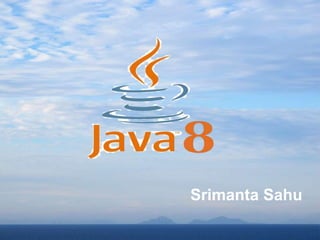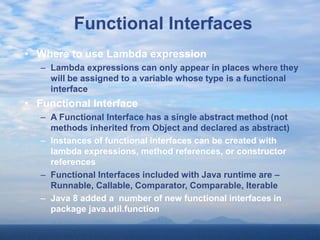This document provides an overview of new features in Java 8, including lambda expressions, streams, date/time APIs, Nashorn JavaScript engine, and improved string joining capabilities. Key points covered include lambda expressions allowing anonymous functions, streams supporting parallel processing of collections, immutable date/time classes, using Nashorn to execute JavaScript from Java code, and the StringJoiner class and String join method for concatenating strings.













